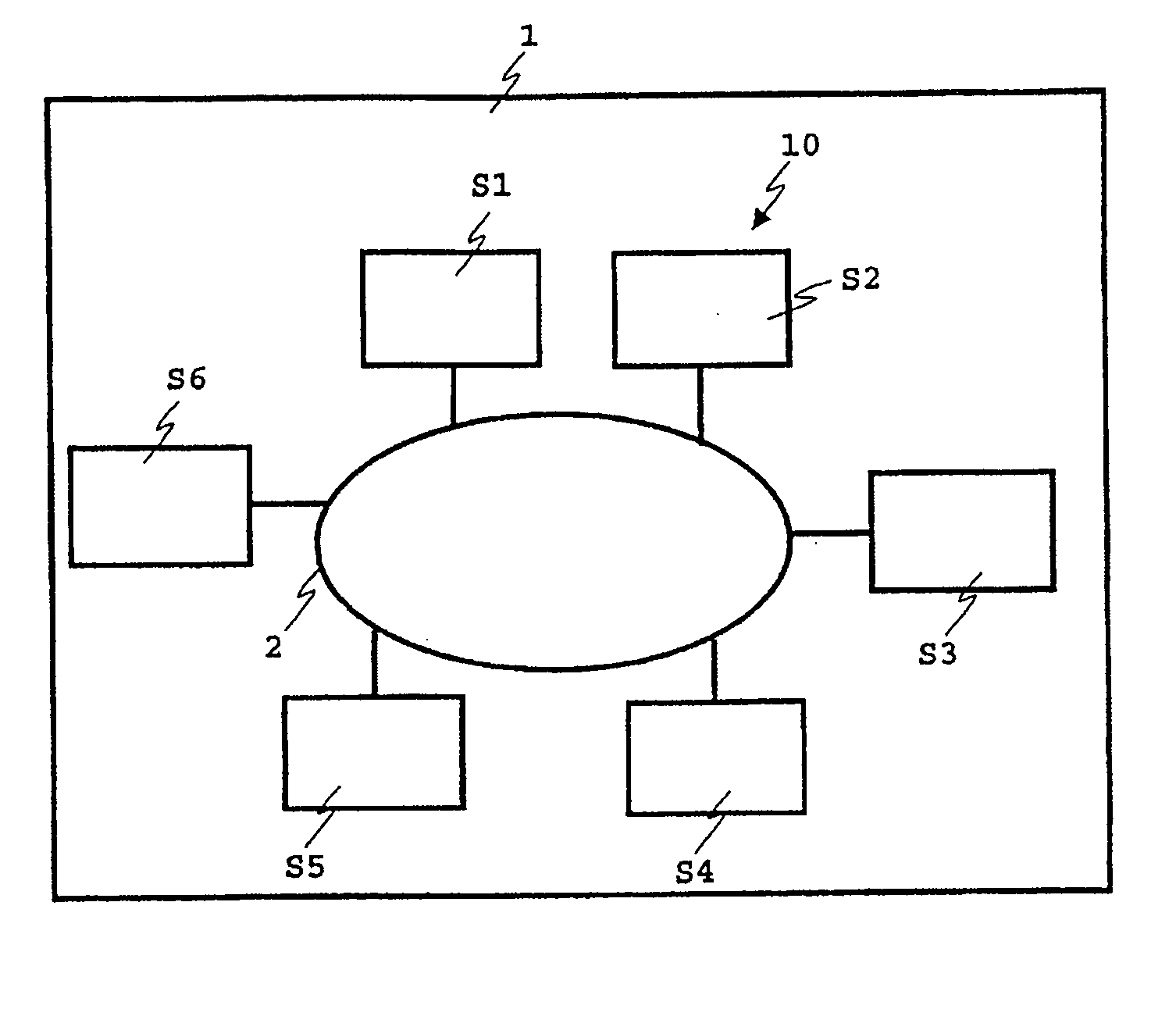Local transmission system for a vehicle
a transmission system and vehicle technology, applied in the direction of data switching network, instruments, synchronisation arrangement, etc., can solve the problems of data loss at the receiver, transmission from a transmitter station to a receiver station can get lost without being noticed by the transmitter station, and data loss can occur unnoticed at the receiver, so as to increase the reliability of transmission and simple and inexpensive hardware architecture
- Summary
- Abstract
- Description
- Claims
- Application Information
AI Technical Summary
Benefits of technology
Problems solved by technology
Method used
Image
Examples
Embodiment Construction
[0024] As can be seen from FIG. 1, a local transmission system 10 in a vehicle 1 comprises a number of stations S1 to S6, which are connected to one another for exchanging messages via a databus 2 (for example, a CAN databus, or an optical D2B or MOST databus). The stations S1 to S6 can act as transmitter station SS and / or as receiver station ES.
[0025] To explain the operation of the local transmission system, FIG. 2 shows by way of example a station acting as transmitter station SS and a station acting as receiver station ES of the transmission system 10. As can be seen from FIG. 2, a data block 20 to be transmitted is divided in the transmitter station SS into N data fragments 30 (with a predetermined size of, for example 48 bytes) which are in each case successively transmitted as part of a message F1 to FN to the receiver station ES. The receiver station ES acknowledges the reception of all messages F1 to FN transmitted by the transmitting station SS in each case individually b...
PUM
 Login to View More
Login to View More Abstract
Description
Claims
Application Information
 Login to View More
Login to View More - R&D
- Intellectual Property
- Life Sciences
- Materials
- Tech Scout
- Unparalleled Data Quality
- Higher Quality Content
- 60% Fewer Hallucinations
Browse by: Latest US Patents, China's latest patents, Technical Efficacy Thesaurus, Application Domain, Technology Topic, Popular Technical Reports.
© 2025 PatSnap. All rights reserved.Legal|Privacy policy|Modern Slavery Act Transparency Statement|Sitemap|About US| Contact US: help@patsnap.com



